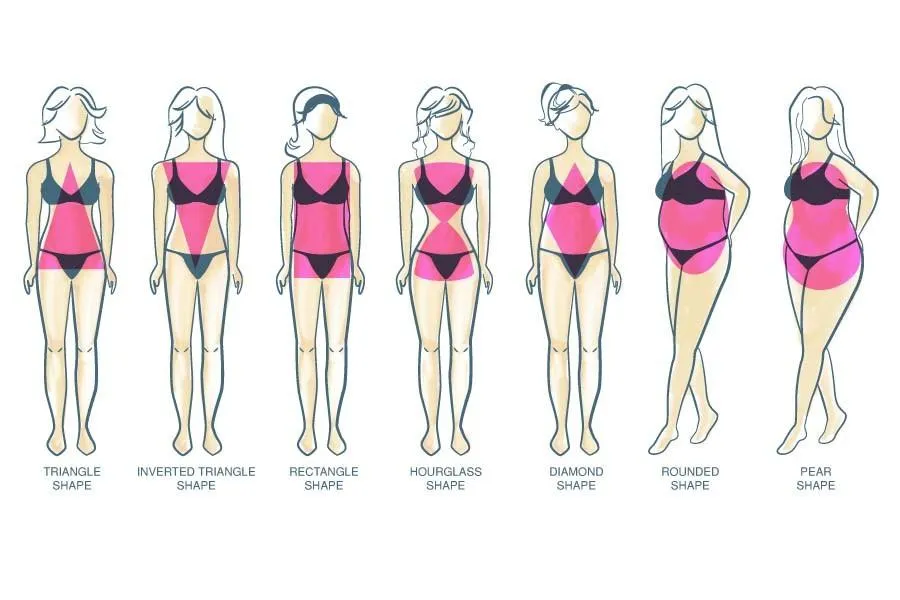Get A NEW Outlook on Your Body.
Stop trying to fix your body. It was never broken.
What Is Body Image 360?
Body Image 360 aims to help people through weight loss coaching, counseling, and therapy around their body image. That means working with you on losing weight, accepting yourself, and on how you see yourself and how you believe others perceive you.
And that's because a positive body image is key to healthy self-esteem. Confidence comes from feeling good in our bodies, not from a number on a scale. And your self-worth should never be measured by weight, or by how others perceive you. The solution is and has always been internal work, not externalities.
Stages to Self-Acceptance
This journey guides you from letting go of unrealistic ideals to fully embracing and respecting your body. Each stage fosters confidence, resilience, and a deeper connection to yourself, leading to true self-worth and inner peace.
Letting Go
RELEASING THE ILLUSIONS, MYTHS, MISCONCEPTIONS AROUND WOMEN'S BODIES AND PARTICULARLY ONE'S OWN
Letting go of the hopes and wishes of the ideal body and the symbolic perfection that it represents. Grieving the loss of the hoped for ideal and begin with simply what is in the here and now, rather than the past and future dreams. This is a process of grieving for the loss of the idealized body as a means of acquiring inner happiness.
Acknowledgement
Acknowledgment of one's own genetic makeup
This stage encourages an individual to own their particular genetic endowment- for better or worse- this is the machine that each of us was given to ride out in this lifetime. The acknowledgment does not necessarily imply acceptance. It is a listmaking and a breaking down the body into parts. Which are liked and which are not liked- the aspects of the body that need to be integrated into the whole. Also in this stage is acknowledgment of the rhythm of one's own particular body- heart rate, movement rhythm, internal clock, metabolic rate, etc.
Setting Limits
BOUNDARY DEFINITION - ESTABLISHING A CONCEPT OF INTERNAL AND EXTERNAL BOUNDARIES
Internal boundaries include the ability to say no, assertiveness skills and establishing the limits of energy expenditure as well as developing more effective ways to expend physical energy. OUTER boundaries are the physical boundaries, the space the body occupies. This is an objective criteria, yet can be experienced as an emotional issue. Getting a mental picture of the boundaries of the body facilitates the experience of self cohesion.
Empowerment
OWNING ONE'S OWN PHYSICAL POWER
Each body possesses a certain amount of strength. Even the most emaciated of bodies has an element of physical strength to keep the body alive. By imparting this information on a physical level, the information gradually becomes internalized as inner strength. This builds ego involvement with the body and an ownership of the positive qualities that one possesses- physical as well as mental, emotional and spiritual.
Acceptance
FACILITATING ACCEPTANCE OF THE BODY THROUGH MOVEMENT, VISUALIZATION AND THE BREAKING DOWN OF THE COGNITIVE DISTORTIONS THAT CREATE BODY DYSMORPHIC DISORDER
This stage includes breaking through the resistance of what is at the moment. Changing, as if by magic, was cognitively addressed in an earlier stage, however, through movement the acceptance can be integrated. The cognitive work continues in the form of affirmations. Goals can be utilized here AFTER the acceptance of what is- the goal to reach a "fighting weight", the healthy weight that allows for secondary sex characteristics and muscle to develop in the anoretic and allows for a normalization of weight within a broad range for the overweight.
How Is Body Image Developed?
Our sense of our body begins in infancy. Having a body and exploring our bodies is part of development. Moving and crawling and walking and jumping gives us a sense of our body in space. Seeing a baby's joy at discovering what the body can do is the beginning of developing a body image. Messages about our bodies and appearance come from our family, society, and our peers. We hear about our bodies from the time we are born. If we get critical messages, we will have to repair our body image later in life. As our bodies grow and change, we perceive ourselves differently. Our view of our body as a child is different when we become a teenager. As we mature and age, our body image changes again.
Body Image 360 Services
At Body Image 360, our goal is to consistently deliver outstanding results that exceed your expectations. We offer:
Work With Body Image 360
Want to book an appointment or read more about our solutions?
You can book an appointment on the booking button below, and you can see our materials by clicking "Learn More".
Start Your Journey With Body Image 360
At Body Image 360, our goal is to consistently deliver outstanding results that exceed your expectations. We offer:
Read Our Book
We provide the best acceptance counseling in San Diego, CA, and surrounding areas.
Read More About Us
We provide the best psychotherapy service in San Diego, CA, and surrounding areas.
Book An Appointment
We provide the best weight loss coaching in San Diego, CA, and surrounding areas.
Happy Body Image 360 Clients

"Working with Susan has been an incredible experience. Her expertise in psychotherapy and weight loss coaching helped me break free from unhealthy cycles and embrace a balanced, fulfilling life."
Nancy W.

"Susan has truly changed my life. Her compassionate guidance helped me rebuild my confidence and develop a healthier relationship with my body. I finally feel free from the negative self-talk that held me back for years!"
Julie C.

"Susan creates such a safe and welcoming space. Her insights into body image and self-worth have empowered me in ways I never imagined. I now approach food, exercise, and self-care with kindness instead of guilt."
Connie C.
Book An Appointment With Body Image 360
Work Schedule
Individual Discovery Appointments
Book yourself an initial discovery appointment with Susan Ward, LCSW, with over 25 years of experience in treating eating disorders, weight loss coaching, counseling, and therapy around body image.
Mon – Fri: Open By Appointment
Sat – Sun : Closed
Frequently Asked Questions
What is Body Image 360?
Body Image 360 is a holistic approach to body image counseling, psychotherapy, and weight loss coaching. Led by Susan K. Ward, LCSW, we help individuals develop a healthier relationship with their bodies by focusing on self-acceptance, emotional well-being, and sustainable lifestyle changes rather than just external appearance.
How is your approach different?
Unlike traditional weight loss programs that focus solely on dieting and numbers on a scale, Body Image 360 prioritizes mental and emotional well-being. We combine body awareness, movement, visualization, and positive psychology to help clients feel confident, strong, and at peace with their bodies.
Do I need to have an eating disorder to seek help?
Not at all! Many of our clients do not have eating disorders but still struggle with negative body image, emotional eating, or self-doubt. If you feel disconnected from your body or constantly battle with self-criticism, our counseling and coaching services can help.
Can I benefit from working with Body Image 360?
We work with teens and adults who struggle with body image, emotional eating, self-esteem issues, and weight concerns. Whether you want to lose weight in a healthy way, heal your relationship with food, or simply feel more confident in your body, we’re here to support you.
What should I expect in my first session?
Your first session is all about understanding your unique journey. Susan will listen to your concerns, discuss your goals, and introduce you to the Body Image 360 approach. Together, you'll create a personalized plan to help you build self-acceptance, confidence, and a healthier relationship with your body.
How do I get started?
Getting started is easy! You can Book an Appointment through our website or reach out for a free consultation to learn more. If you're ready to break free from negative self-talk and embrace a positive body image, we’re here to help.
Why Work With Body Image 360
Meet Susan Ward, LCSW
Susan K. Ward has over 25 years of experience in eating disorder treatment. She developed a method that blends body awareness, dance movement, visualization, and positive psychology. Her core message is self-acceptance as the first step toward wholeness. She helps teens and adults achieve a healthy weight and positive body image.
About
Body Image 360 is a holistic approach to body image counseling, psychotherapy, and weight loss coaching led by Susan K. Ward, LCSW.
Opening Hours
Mon – Fri: Open By Appointment
Sat – Sun : Closed
Contact Info
9255 Towne Centre Drive Suite 370, San Diego California 92121
Email: [email protected]
Phone: (858) 450-3210















